#siphonophore
Text

If you go to the pool this summer, watch out for False Caustics. They look like the dancing lights at the bottom of the pool, but they stay mostly still.
False Caustics (Praya dulcis) are in fact siphonophores that colonize pools with poor filtration systems. If you swim through them, they will burn your skin. Their sting is rarely fatal, but it causes excruciating pain that can last several years.
These siphonophores are colonies of tiny organisms related to jellyfish. They are the only known species in their group to live in fresh water, and likely imitate caustics as a form of camouflage.
#unreality#photoshop#horror art#siphonophore#medical horror#body horror#this is part of an art trade with 0ce4n-m4n!
406 notes
·
View notes
Text
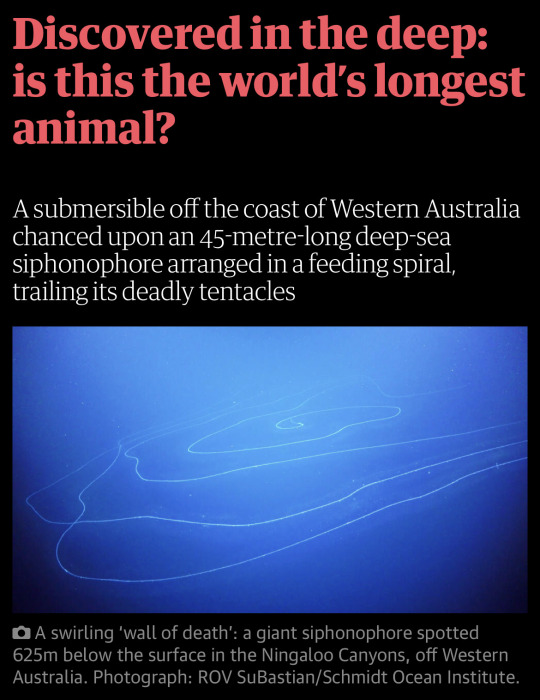
Babe, wake up, new long creacher just dropped
27K notes
·
View notes
Text
Giant Siphonophores really out here doing the most, and somehow also the least
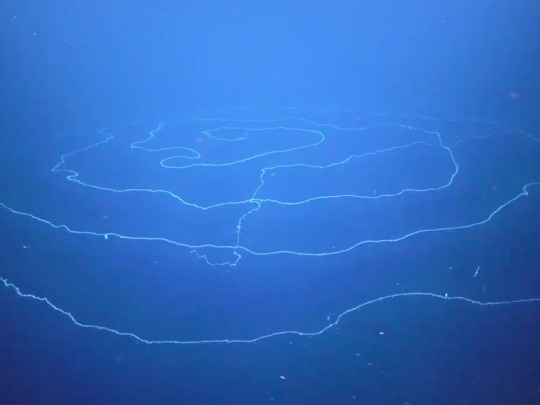
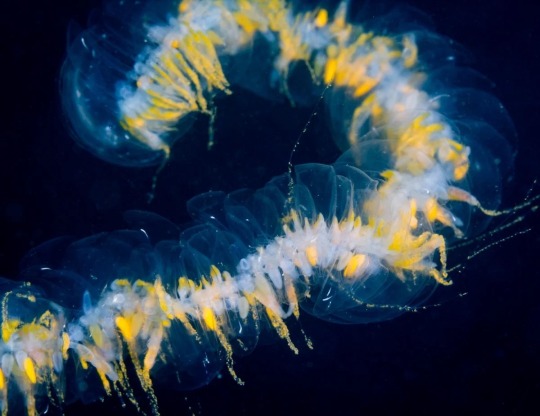

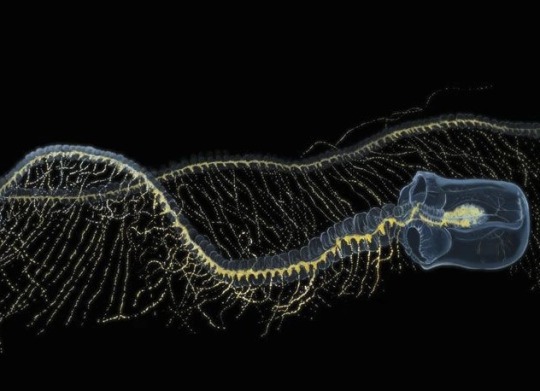
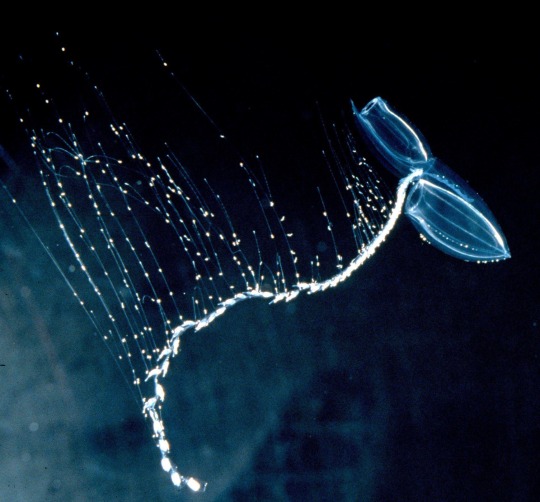

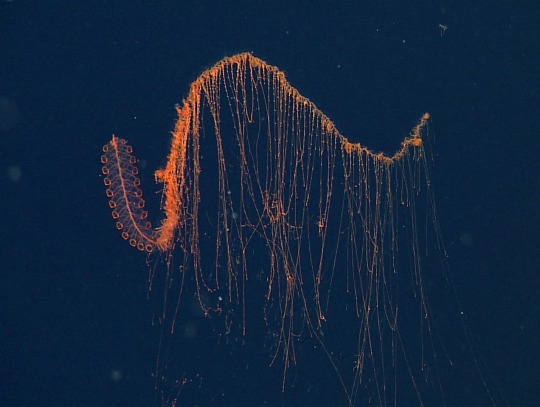

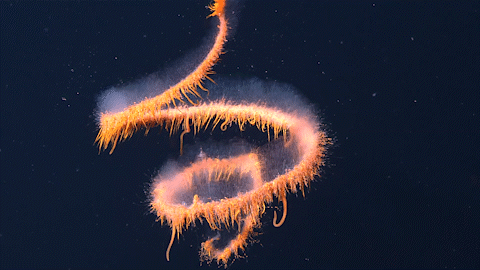
Love to sea it
#ocean#deep sea#benthic#hydrozoa#these are my friends#cnidarians#siphonophores#siphonophore#marine biodiversity#marine biology#biodiversity#biology#creature#marine life#marine science#sea life#fish#creatures#source: internet#love to sea it
22K notes
·
View notes
Text

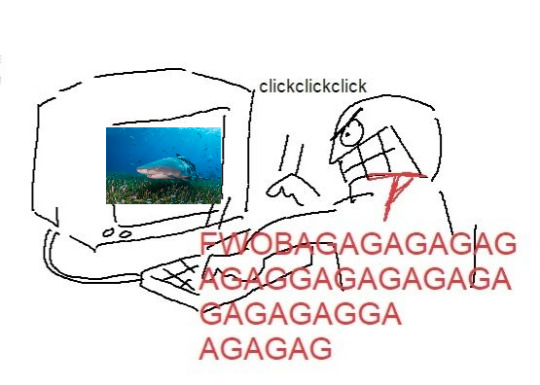

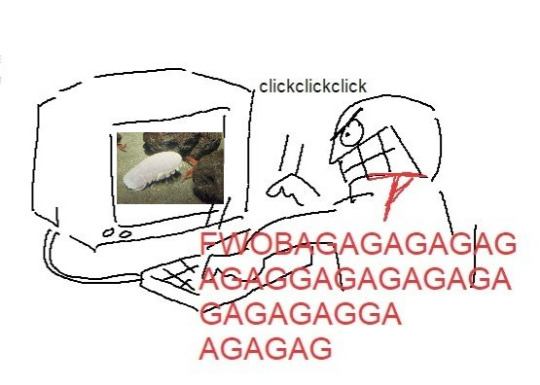

real
#eddie in the ocean#marine biology#shrimp#lemon shark#damsel fish#giant isopod#siphonophore#marine biology shitpost#marine life
2K notes
·
View notes
Text


The Sleipnir Cloak Drifter
Another discovery made by the Ladder during their failed expedition to Tartarus. Its shadowy membrane obscures most of its body.
#sea monster#leviathan#siphonophore#thalassophobia#monster art#hallowed carrion#another siphonophore inspired leviathan#it was kind of inspired by Mergo’s wet nurse and the deep sea staria :3c
3K notes
·
View notes
Text

Portuguese man o' war
By: Unknown photographer
From: Wildlife Fact-File
1990s
783 notes
·
View notes
Text
Deep-sea siphonophore
Siphonophores are gelatinous animals composed of specialized parts growing together in a chain. Each part (zooid) is structurally similar to other solitary animals, but the zooids are all attached to each other rather than living independently.
This siphonophore, Erenna richardi, can be identified by the massive clusters of tentilla (the side branches of the tentacle) at the end of the tail (siphosome). In Monterey Bay, this species has been observed at average depths of about 1,100 meters (3,600 feet). These siphonophores are armed with a battery of powerful stinging tentacles and researchers have seen them ensnaring fish just above the seafloor.
Historically, gelatinous animals have been challenging to study. Their delicate nature makes them difficult to collect, especially from the ocean’s depths. By using deep-diving robots—remotely operated vehicles, or ROVs—MBARI and our collaborators are revealing the dazzling diversity of delicate drifters that lies beneath the surface.
841 notes
·
View notes
Text

'Dancing Rhizophysa'
Based off Rhizophysae in real life, a type of Siphonophore.
1K notes
·
View notes
Text
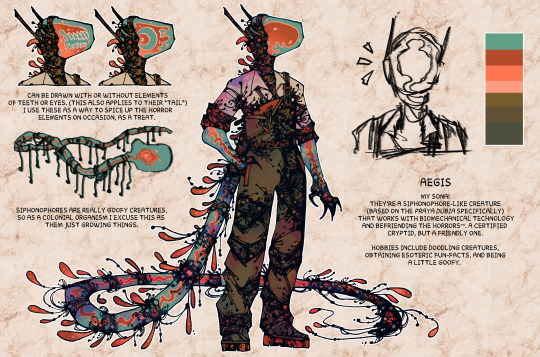
Artfight in 4 days so I'm finishing up my last few refs (I've got 1-2 after this?)
Anyways, self-indulgence time. I've been meaning to make an artist sona type thing for ages (and started thinking about it again when drawing my spidersona thing). But having my favorite creature as a siphonophore made workshopping a design a bit of a struggle.
Thankfully the worms in my brain give me many good ideas.
#my art#artists on tumblr#siphonophore#artist sona#reference sheet#every day I wake up and think about cool sea creatures#it is a good life
1K notes
·
View notes
Text

Miku as a Siphonophore! I'm pretty sure I saw someone else do this first but I cannot find it for the life of me. So credit to whoever decided to combine these two things. I wanted to do one based off the of the Siphonophore that ended up on Japanese Broadcast in 1991 with the glowing orbs
1/18/24
#Weird nonsensical biology aside I'm very happy with how this came out!!#if it doesn't look enough like miku idgafff i love her#hatsune miku#siphonophore#miku#miku fanart
391 notes
·
View notes
Text

#gottem#wizardshitposts#marine biology#marine life#marine biology shitpost#marine memes#portuguese man o war#siphonophore#cnidarians
2K notes
·
View notes
Note
They always say that the Portugese Man'O'War is a colony of different animals, including the reproductive parts
How the fuck does that work?
okay to make a long and complicated thing shorter, stupid, and marginally less complicated:
Colonial organisms, like the man o' war, all sorta occur when one organism, produced via sexual reproduction, asexually reproduces itself into a ton of clones. These clones, zooids, are hypothetically "free-living", and could do the same thing as the original. Eventually, though, they specialize into different roles, changing their form and function to suit different roles in the body of the man o' war. Some of them produce carbon monoxide, which is like, a tenth of what fills the float (or pneumatophore, if you want to impress someone on a date sometime) on top of the organism, some allow it to reproduce, some can feed, and some are just Toxin Cells For Killing And Hurting. Anyways, it basically looks like one animal, but is technically a billion trillion [citation needed] tiny versions of the same zooid printing copies of itself.
TLDR: portuguese man o' war is kinda like osmosis jones, i think.
600 notes
·
View notes
Text
Siphonophore rainbow 🌈
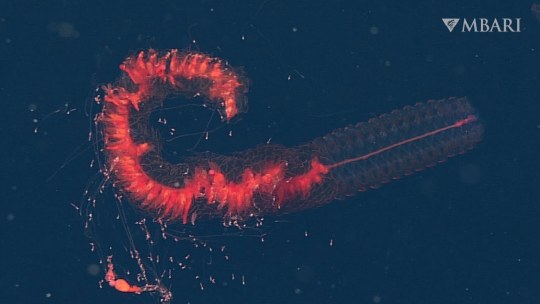

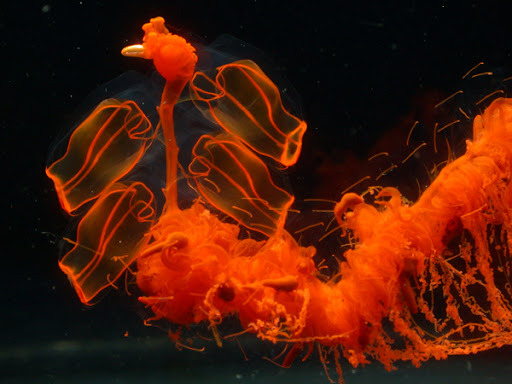


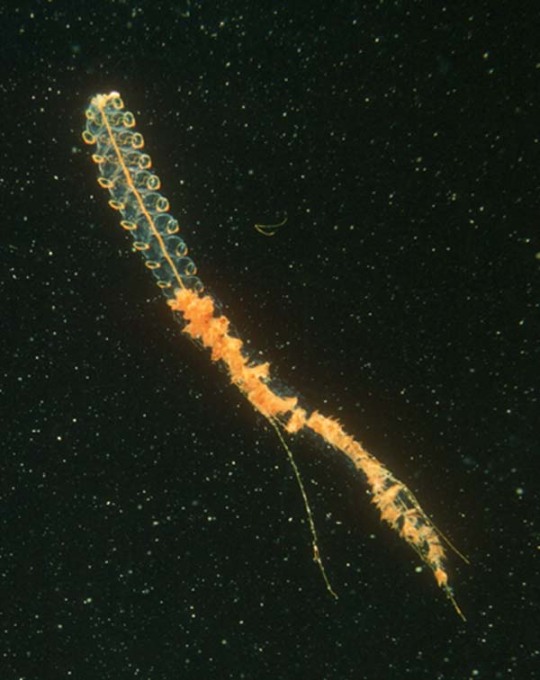
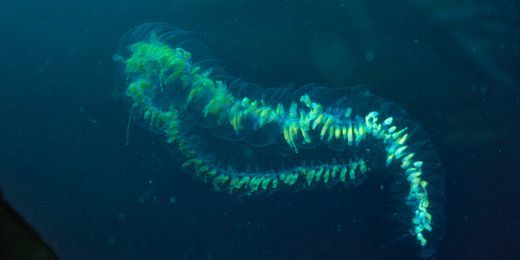
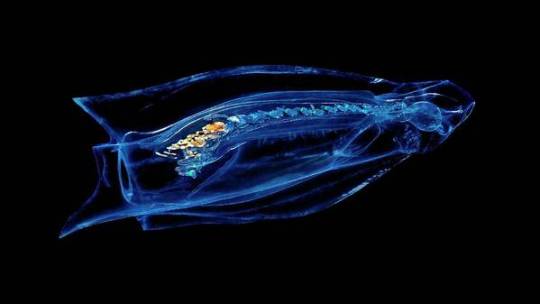
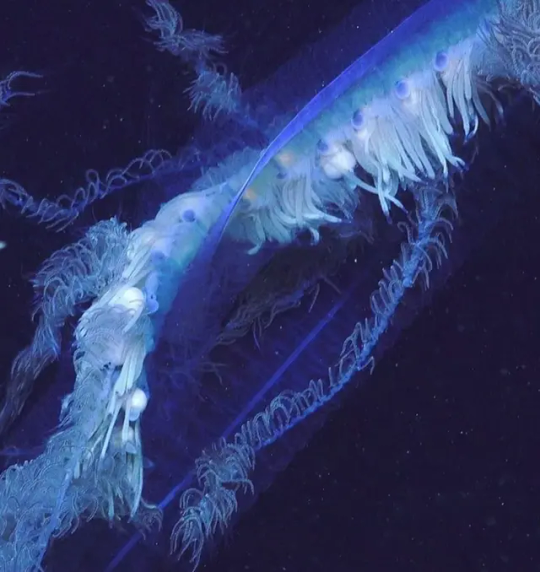

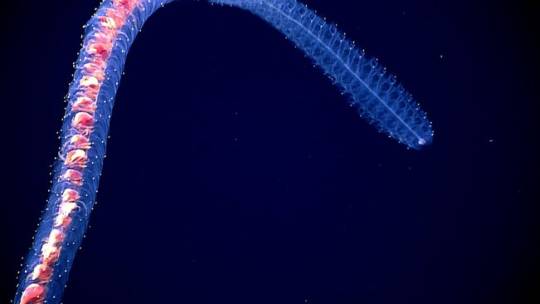
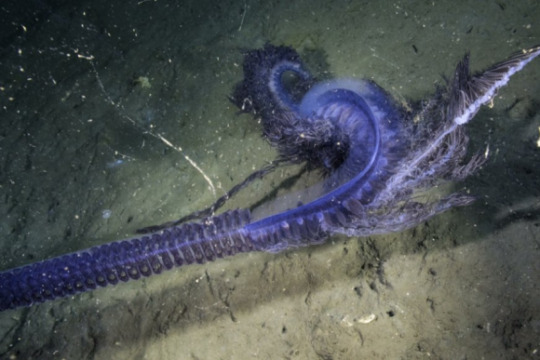
Love to sea it 🌊
#marine biology#fishblr#biology#science#marine science#fishposting#oceanposting#ocean life#deep sea#siphonophores#siphonophore#cnidarians#hydrozoa#marine creatures#love to sea it#ocean creatures#oceanography#ocean critters#marine life#marine animals#sea critters#sea creatures#ocean animals#ocean#underwater#sea life#aquatic life#underwater photography
820 notes
·
View notes
Text
The Sea Creature of the Day is the Portuguese Man o' War!!!

(gif credit: @life-on-our-planet, direct link )
aaaaaa!!! 🥰🥰🥰 i love these guys. researching them was what lead to my long lasting obsession with siphonophores after i saw one on a vacation as a child.
there's something oddly beautiful to me about their method of gathering food. just floating there with these incredibly painful danger noodles hanging below. and it's a siphonophore so it's like... an apartment building of people that's also one creature all peacefully waiting for the currents to take them to food. it's beautiful and so so so cool and i love them 🥰🥰🥰🥰
#marine biology#deep sea#sea creatures#sea creature of the day#aquatic life#ocean#ocean life#fish#jellyfish#siphonophore#man o war
718 notes
·
View notes
Text


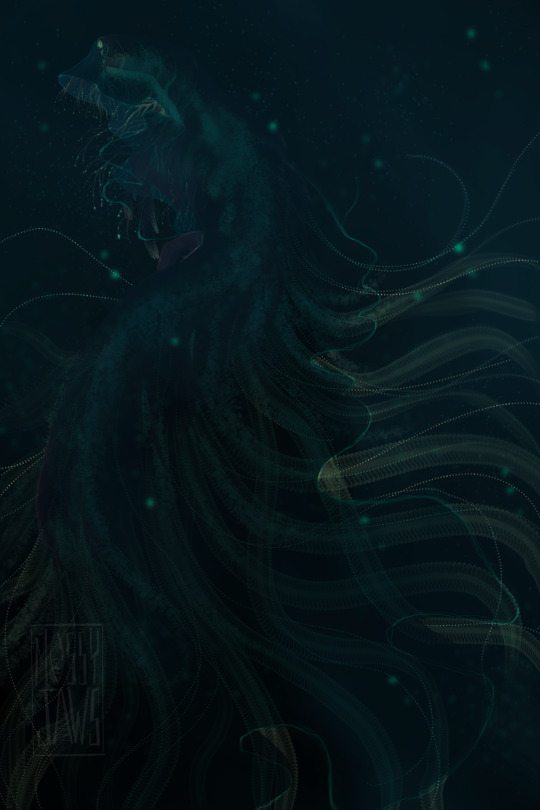

Did some more art of Sleipnir while finally watching Lake Mungo.
Also fixed the brightness on those other two so maybe they’re a little easier to see now.
They will stomp you with their fancy little gossamer hooves.
#hey look at my weird horse#leviathan#sea monster#siphonophore#thalassophobia#sleipnir#the movie had an impeccable mood#very sad but very chilling#love that#no unnecessary jump scare bs#just a good ghost story
1K notes
·
View notes
Text

Portuguese man o' war with a fish in its tentacles
By: Werner Jacobs
From: Natural History Magazine
1962
#predation#portuguese man o war#siphonophore#hydrozoan#cnidarian#invertebrate#1962#1960s#Werner Jacobs#Natural History Magazine
574 notes
·
View notes